AMD Reveals Threadripper 2 : Up to 32 Cores, 250W, X399 Refresh
by Ian Cutress on June 5, 2018 11:05 PM EST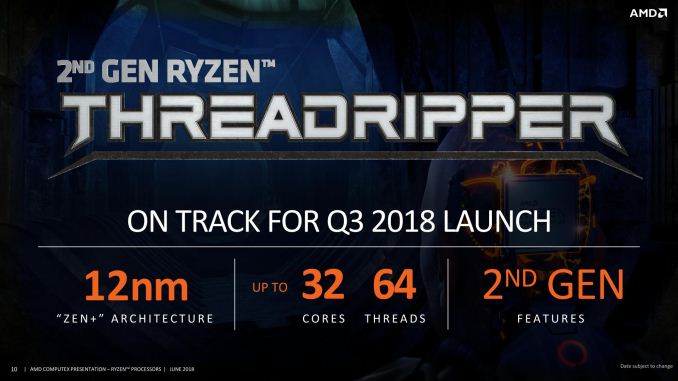
One of the surprises from AMD’s first year of the newest x86 Zen architecture was the launch of the Threadripper platform. Despite the mainstream Ryzen processors already taking a devastating stab into the high-end desktop market, AMD’s Threadripper offered more cores at a workstation-friendly price. For 2018, the next generation is going to be using AMD’s updated 12nm Zeppelin dies, as well as including a few new tweaks into the system including better boost and faster caches.
This article is still a work in progress, and will be updated as more news comes in.
AMD’s Zeppelin silicon has 8 cores, and the first generation Threadripper uses two of them to get to the top-SKU of 16-cores. Inside the CPU however, there are four pieces of silicon: two active and two inactive. For this second generation of Threadripper, called Threadripper 2 or the Threadripper 2000-series, AMD is going to make these inactive dies into active ones, and substantially increase the core count for the high-end desktop and workstation user.
At the AMD press event at Computex, it was revealed that these new processors would have up to 32 cores in total, mirroring the 32-core versions of EPYC. On EPYC, those processors have four active dies, with eight active cores on each die (four for each CCX). On EPYC however, there are eight memory channels, and AMD’s X399 platform only has support for four channels. For the first generation this meant that each of the two active die would have two memory channels attached – in the second generation Threadripper this is still the case: the two now ‘active’ parts of the chip do not have direct memory access.
This technically adds latency to the platform, however AMD is of the impression that for all but the most memory bound tasks, this should not be an issue (usually it is suggested to just go buy an EPYC for those workloads). While it does put more pressure on the internal Infinity Fabric, AMD ultimately designed Infinity Fabric for scalable scenarios like this between different silicon with different levels of cache and memory access.
Update: AMD has just published a full copy of their slide deck for the Threadripper 2 presentation. In it are a few interesting factoids.
| AMD Threadripper CPUs | |||||
| Threadripper 2 32-Core Sample |
Threadripper 2 24-Core Sample |
Threadripper 1950X |
Threadripper 1920X |
||
| Socket | TR4 (LGA) 4094-pin |
||||
| CPU Architecture | Zen+ | Zen+ | Zen | Zen | |
| Cores/Threads | 32 / 64 | 24 / 48 | 16 / 32 | 12 / 24 | |
| Base Frequency | 3.0 GHz | 3.0 GHz | 3.4 GHz | 3.5 GHz | |
| Turbo Frequency | 3.4 GHz (WIP) | 3.4 GHz (WIP) | 4.0 GHz | 4.0 GHz | |
| L3 Cache | 64 MB ? | 48 MB ? | 32 MB | 32 MB | |
| TDP | 250W | 250W | 180W | 180W | |
| PCIe 3.0 Lanes | 60 + 4 | ||||
| Chipset Support | X399 | ||||
| Memory Channels | 4 | ||||
- Both the 24-core and 32-core sample CPUs are clocked at 3.0GHz base and 3.4GHz all-core turbo, with the latter being a work-in-progress according to the company.
- The 32-core system was equipped with DDR4-3200 memory. This is notable because the Ryzen processors based on the same 12nm Zeppelin dies officially max out at DDR4-2933.
- The codename for the processor family is listed as "Colfax". This is the first we've heard this codename from AMD.
- Despite the high TDP, both CPUs used in AMD's demos were air-cooled, using AMD's Wraith Ripper Air Cooler
Also announced at the presentation is the state of play of motherboards. According to the motherboard vendors These new Threadripper 2000-series processors will have a peak TDP rating of 250W, which is much higher than 180W we saw on the 1950X. We have been told by partners that the 250W rating is actually conservative, and users should expect lower power consumption in most scenarios. Nonetheless, it was stated by several motherboard vendors that some of the current X399 motherboards on the market might struggle with power delivery to the new parts, and so we are likely to see a motherboard refresh. That is not saying that the current X399 offerings will not work, however they might not offer overclocking to the level that users might expect. At Computex there are new X399 refresh motherboards being demonstrated by a few companies, and we will report on them in due course. Other specifications are expected to match the previous generation, such as PCIe lane counts, despite the newly active dies.
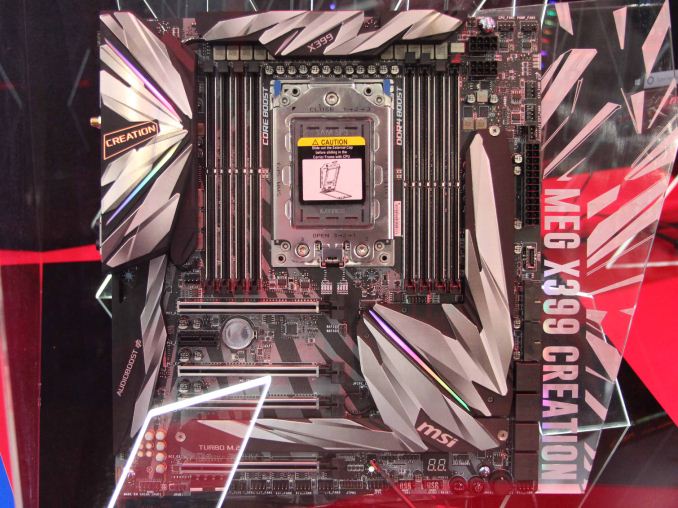
MSI's 19-phase X399 Refresh Motherboard
The launch for these new processors, according to our moles is in early August. This aligns with what AMD stated at the beginning of the year at CES, and is almost a year from the original Threadripper launch.
Pricing on the processors is set to be revealed either today or closer to the launch time. We will update this piece as more information comes in.
It will be interesting if AMD is going to go through the ‘unboxing’ embargo this time around, or just jump straight to full performance reviews. As always, come to AnandTech for the full story.
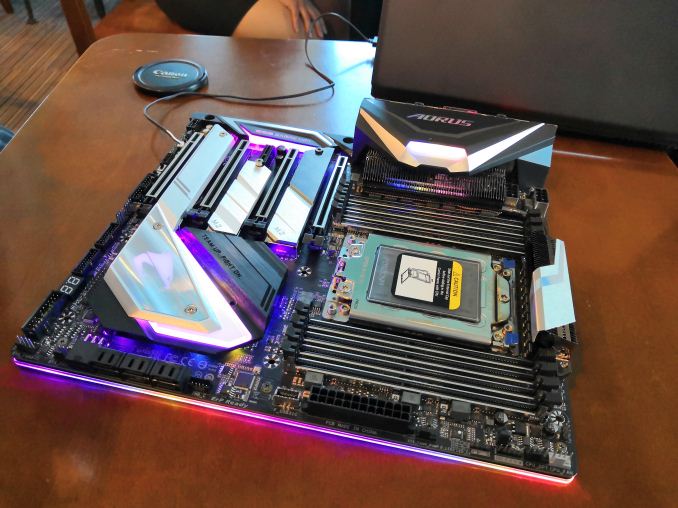
GIGABYTE's new X399 Refresh Motherboard
| Want to keep up to date with all of our Computex 2018 Coverage? | ||||||
 Laptops |
 Hardware |
 Chips |
||||
| Follow AnandTech's breaking news here! | ||||||


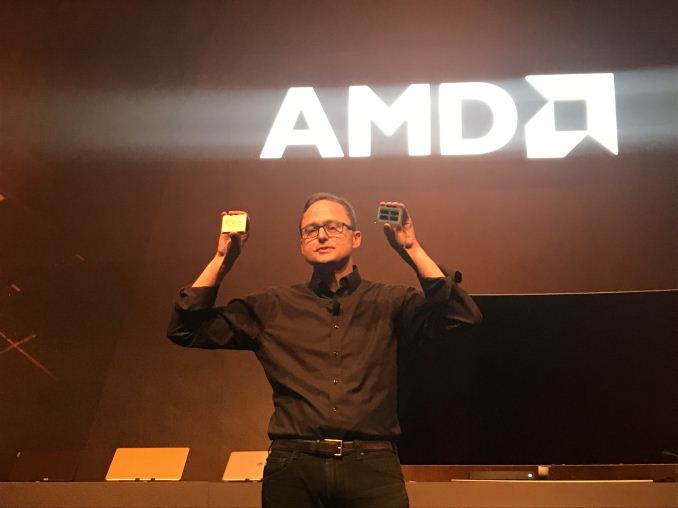
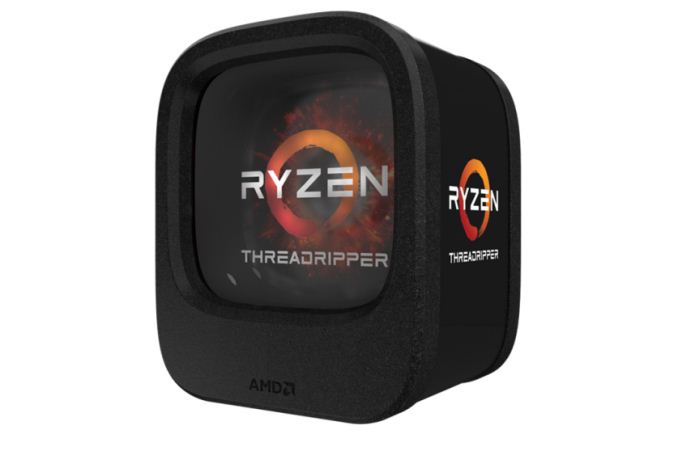
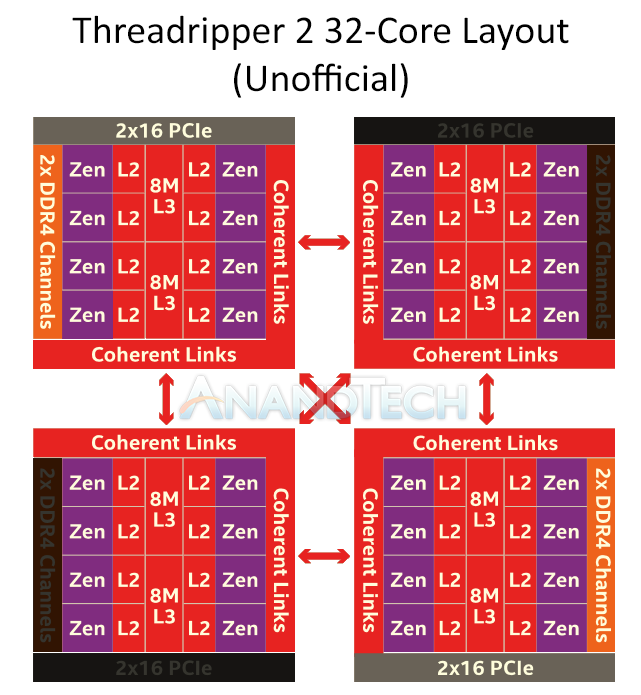
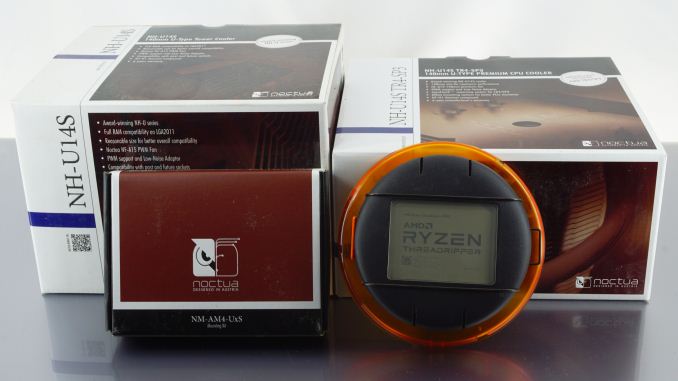














203 Comments
View All Comments
HStewart - Wednesday, June 6, 2018 - link
But that was before they were command 16 cores on AMD to 8 cores on Intelpeevee - Wednesday, June 6, 2018 - link
It does not matter. HT is not as beneficial as SMT for exactly the same reasons Intel has better IPC in single thread.0ldman79 - Wednesday, June 6, 2018 - link
I believe the differences in the SMT implementations comes down to the differences in the integer cores.If I read the data sheets correctly, AMD's integer pipelines are all symmetrical, Intel has a long pipeline (or two) and a couple of short pipelines. Which architecture really does better depends entirely on the code.
AMD should have better total number crunching on paper, Intel can finish certain lines of code faster on a 4 stage pipeline vs the 13-14 stages of the AMD, then Intel has the 13-17 stage pipeline for more complicated problems.
babadivad - Wednesday, June 6, 2018 - link
Even if they do a 5Ghz water cooled version, it won't be 5Ghz on all cores. Because it's impossible, even with water cooling.evernessince - Wednesday, June 6, 2018 - link
Water cooling isn't enough. Intel required an insulated custom loop, a high end water chiller, a 29 phase motherboard, and a copper triple fan VRM heatsink.You are looking at spending at least $3,000 just on those parts. And that's not considering if Intel delided or direct die mounted, which would void your $10,000 CPU warranty.
You are simply gullible if you think Intel will ever release a consumer facing CPU that consumes 933 watts.
cyberguyz - Thursday, June 7, 2018 - link
Toms Hardware's comment about a $10,000 cpu was in relation to the Xeon platinum cpu, not Intel's 28 core one. I don't expect Intel's 28 core cpu to go beyond $ 4,000. Not if Intel still wants to be competitive with AMD (I expect to see AMD's hit around $2000-$2200),cyberguyz - Thursday, June 7, 2018 - link
I wouldn't bet on that 5Ghz value. It is a publicity stunt. The only way Intel could ever hit 5Ghz was to use a sub-zero (-10C) phase change-based chiller. You might be lucky to hit 4.5-4.7Ghz with it though.Chaitanya - Wednesday, June 6, 2018 - link
This user seems to be a wccftech troll that has found its way to Anandtech. Heavily OCed Cpu(with unknown details about socket, etc) with some exotic cooling system vs stock cpu with aftermarket cooler now thats not a fair comparison even in remotest sense of testing.Hiorian - Tuesday, June 5, 2018 - link
Considering Intel Waterchilled theirs in order to reach that score, no surprise. AMD probably didn't want to cheat by water cooling their cpu to its maximum potential that no one would use constantlycoder543 - Tuesday, June 5, 2018 - link
People were upset that AMD kept using Cinebench, thinking that it was the only benchmark they were good at, and now you're upset that they're *not* using Cinebench in the demo.